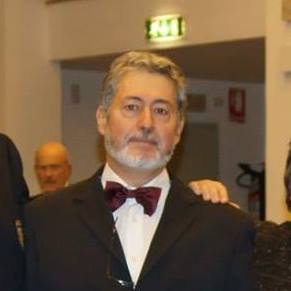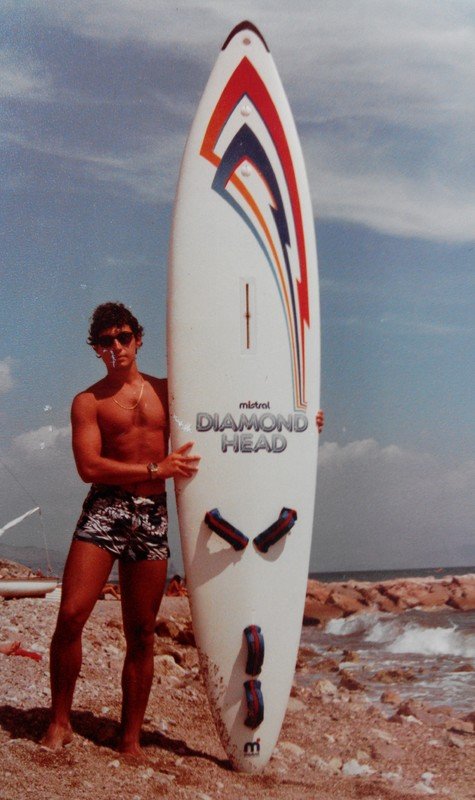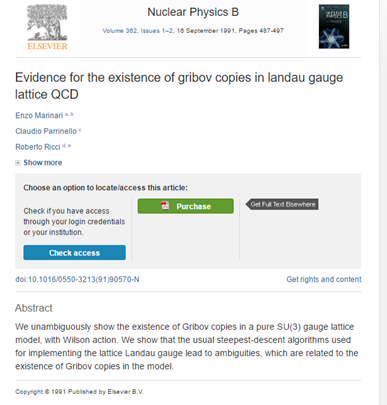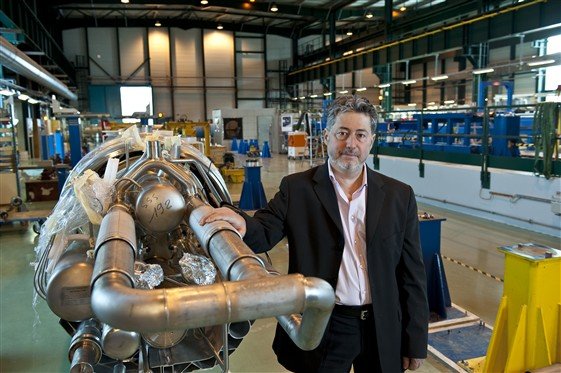Help! I am an Innovation Addict! From Ph.D. in Quantum Chromodynamics to Cryptos (going through CERN and lots of other places…)
Hi there. I was dared by @complexring to write this introduceyourself post, so…here I am, lol!

I am a Theoretical Physicist (Ph.D. in Quantum Chromodynamics), former manager at CERN, Geneva, entrepreneur and international consultant. I also sing as a tenor in a choir in Rome, write novels in my native language (Italian), and have just completed a training, out of intellectual interest, to be a chartered family mediator. So, I have done many things (possibly too many…), as I tend to get interested into anything which is innovative and somewhat hard! I feel I have lived already many lives…
I will mention lots of things in this post. If you want to know more about any of the topics, just comment and ask. I might end up anyway writing additional posts regarding e.g. life and technologies at CERN, etc.
Life #1: Researcher
Scientific disclaimer: I will insert here some mathematics/physics-related digressions which are obviously very sketchy and cavalier…for the sake of generating some fun and science interest in the audience.
I was born in Rome, Italy, 53 years ago. The first pictures below refer to what I call my “dude years” (up to age 25), when I was mostly focused on having fun with friends, pretending to be a Californian surfer…and trying to learn some Physics in my spare time!

My first Physics year was quite hard (my high school majors: Latin, Greek and Philosophy, lol). At some point I considered quitting Physics, and applied to become an Air Force pilot… I passed the first selection step, but eventually changed my mind and decided to continue with Physics. I probably made the right choice, since some years later I got my M.Sc. in Theoretical Physics from the University of Rome with top marks.
So, at that point I wasn’t just an aspiring cool dude…I was a physicist! My first achievement in the field was obtaining the first evidence, through numerical simulations, of the existence of odd things called Gribov copies, which previously had been “seen” on paper by mathematicians...

Now, I don’t really want to try and explain here what Gribov copies are, but it’s fun to just write the words: Gribov copies arise because it’s not possible to make a smooth global section of a principal fiber bundle P on a compact manifold M with fiber G over M if G is a non-abelian group.
Is this clear? Lol, if not, let me put it in a different way: imagine that you want to cut in one single smooth move a friend’s hair all around his head, and moreover you must cut each hair only once. If you run into difficulties, and some hairs get cut twice or more, you can justify your failure by claiming that you have stumbled into a Gribov ambiguity. WARNING - You might lose a friend by doing this...
Ok, let’s move on…
After graduating, I did my compulsory military service as an officer in the Italian Navy, ending up in Venice, which was quite fun as I could play the dude with a uniform…

A couple of years after graduating I moved to the USA, where I spent three exciting years commuting between NYC (as a graduate student at New York University) and Long Island, since I was also a sort of Junior Research Associate at Brookhaven National Laboratory. It was a fun and intense period. I learned a lot, and not only in physics. Compared to NYC, Rome was as quiet as a Swiss mountain village, at least in 1990. It was the first time I lived abroad, so the Big Apple was both exciting and scary to me, especially the Lower East Side where I was living.
After three years, I got my Ph.D. from a top Italian university (Scuola Normale Superiore) with a dissertation based on the research work I had done in the USA. Then I moved back to Europe. First, I got a post-doctoral position in Edinburgh, Scotland.

Lovely city, lovely people, very good university.
Research-wise, I was a member of a very strong group performing large scale numerical simulations of Quantum Chromodynamics, which is broadly speaking the theory describing the forces that keep the constituents of atomic nuclei, called quarks and gluons, bound together.
These forces act in a very peculiar way: as long as quarks and gluons are very close to each other, inside the atomic nucleus, they are almost “free” to move as they like, i.e. the force between them is very weak. On the contrary, if you try to pull them apart, e.g. if you want to “extract” a quark from a nucleus just to see what it looks like, the force that binds it to other quarks and gluons acts as if you were pulling a spring - the harder you pull, the stronger the force that opposes your pull.
Eventually, the spring breaks… You would think you end up with a nice quark into your hands, but on the contrary, thanks to the magic of quantum field theory, another quark pops out of the vacuum and sticks to your quark…! It’s impossible to keep a quark on its own, far from his friends. This phenomenon is called color confinement.
While in Edinburgh, I applied for a 5-year tenure-track position in the University of Liverpool, and got it.

That was also a fun and interesting place, and a fruitful period in terms of research. However, over time, I started developing a strong interest for other topics, e.g. the financial markets and understanding the way large companies function.
So, to make a long story short, I eventually resigned from my academic position…
Life #2: Cost-cutter
We moved from England to France, very close to the Swiss border (Geneva region).

After turning down a job offer from a top consulting firm (don’t ask why…), I set up a boutique consulting activity aimed at medium to large European companies.
We offered to review for free their corporate spending patterns, focusing on items like travel, telecommunications, facility management and other overheads. We crunched numbers, analyzed contracts and made a mathematical model of the situation.
Then, IF savings opportunities were identified (without harming quality), we made a proposal to achieve them, AND IF the corporation agreed, we implemented our proposal and then monitored expenditure over the following 12 months, in other to compute ACTUAL savings achieved.
All this work we performed at our own risk….but the reward was big in case of success, as our fees were 50% of the value of savings achieved in the first 12 months.
Was this very risky for us? Indeed. Did we make money nonetheless? Yes.
Apart from the money, this activity enabled a physics dude like me to get acquainted with top managers from tenths of leading companies in Italy and other European countries… It felt like I was exploring the other side of the moon, and I liked it.
You might wonder how I managed to move from physics dude to high-flying business consultant!
Well, I was lucky enough to meet people who needed my skills as much as I needed theirs! They could approach and engage top managers on our consulting offer (because of personal relations, age, etc), and I was the young(ish) guy who could do creative data modeling and number-crunching. This worked great for a few years, then things got a bit difficult for a number of reasons. I was ready for my next life.
Life #3: CERN
I got a staff position at CERN. You must realize that CERN is a mythical place for a particle physicist…to begin with, you meet Physics Nobel laureates in the cafeteria every day. And there are thousands of people sharing your interest in topics such as why quarks do the funny things that I described earlier.
Finally, and most importantly, CERN is THE place where the key physics discoveries happen! They build huge machines which are unique in the world and can dig out pieces of the great scientific puzzle about understanding the origin and evolution of the universe.
You might have heard about the discovery of the Higgs boson at CERN through the Large Hadron Collider. Well, that’s one piece of the puzzle…
If you don't find the stuff above exciting, please note that CERN is also the place where the Web was born, lol.
So, what was I doing at CERN? I held managerial appointments. I was first in the Human Resources Department, where I was in charge of all recruitment programs involving young researchers, which was an interesting, high-responsibility job.
After, that I was appointed head of Knowledge and Technology Transfer. This was sort of a dream job for me, because CERN is not only a top scientific institution, but also a knowledge and technology goldmine for industry and society at large. I was in charge of demonstrating that CERN could make a strong beneficial impact on people’s lives, by transferring to European industry technologies relevant for medicine, the environment, etc.
Again, this is too much to be discussed in a single post. Let me say that I felt like a fund manager managing knowledge assets worth several billion dollars!

I proposed a number of innovative programs while in this role. In particular, I was proud of setting up a CERN Global Network program with the goal to create a global knowledge transfer network.
Eventually, that program was put on hold, but I understand that it will be restarted soon.
Life #4: Knowledge Management Consultant
I left CERN after 6 years. Nonetheless, I was asked by an entity in the CERN galaxy (again, this would be a bit too long to explain) to explore an idea of mine which I had no time to pursue while I was in office: applications of semantic classification technologies to knowledge management and transfer.
Let me try to explain this quickly: technology transfer is the game of analyzing a technology which was developed in a specific environment in order to solve a specific problem (e.g. monitor the fluid shift that occurs in an astronaut's body during spaceflight) and discover that it can be adapted to solve a different problem (e.g. measure the water retention in cured hams) in a different environment.
This example is a real one lol…I can supply more info, if someone asks nicely!
The big question is: what does it take to identify a technology transfer opportunity? Answer: two domain experts talking to each other (a space research guy and a food industry guy, in the above example), and a smart dude with cross-domain expertise who makes the other two meet…
Next question...What does semantics have to do with all this? Well, let’s say that semantics suggests a very powerful and exhaustive approach to the classification of structured information, so that most of the domain knowledge in the mind of a human expert can be recorded in a data structure called ontology, which can then power very smart search engines, etc.
For example, you can create an ontology for pizza (Remember..I am Italian!). This data structure not only records all ingredients in a pizza, but also contains rules about cooking times, logical relations, etc, so that for example it can tell you whether ananas as a pizza ingredient is compatible with sausages...
Since ontologies are modular, they can be enriched and enlarged all the time to include new knowledge. In the context of technology transfer, ontologies can be used to classify technologies developed in a specific project, record known applications to other domains, and eventually be matched to other domain ontologies so that they talk to each other and find opportunities automatically….
There are also other interesting applications of semantic classification strategies to industrial data where I have some hands-on knowledge…again, if you want to know more, just ask.
Coming back to my life…. I developed an interesting pilot program on the above stuff in the CERN context, and also undertook some external consulting assignments e.g. developing human resources and knowledge management policies for some research institutes in Poland.
Life #5: Startup Co-Founder
At some point in 2012 I met a smart Italian Ph.D. engineer with a passion for drones, robotics and 3D printing, and a very successful businessman from Norway. We founded together a company in France.
Initially, we worked as a service company, providing aerial photography services using drones. My role in the company focused on building a partnership with CERN and getting recognition and financial support from the French government and other French institutions.
The turning point in the company’s life was when we took a challenge from CERN in respect of creating an automatic, robotized inspection system able to avoid obstacles and determine its own position in underground locations, where obviously GPS cannot help.
The name of this technology game is SLAM – Simultaneous Localization And Mapping, which means that your robot needs “eyes” able to generate in real time a 3D map of the location.
If you solve this problem, you open up a huge number of applications, delivering autonomous inspection/rescue robots able to operate autonomously in dangerous environments, e.g. radioactive, without putting people’s life at risk.
If you robot flies, so it moves fast and there are strong weight constraints, then the SLAM challenge is hardest. Again, making a long story very short, we ended up realizing that no sensors on the market were light, cheap, fast and accurate enough to solve our problem, so…we decided to make such sensors from scratch!
Today, our robotic “eyes” are becoming well-known worldwide and our company, while still small and young, is receiving high-profile international recognition in events such as the Web Summit 2015.
You can see our products here.
Life #6: Wearables, Cryptos, Singing, Writing, and Exploring the Mysteries of Love and Relationships…
Three years ago I moved back to my home town: Rome.

While I am still supporting Terabee in areas such as grant-seeking, I am currently pursuing additional business projects. It’s a bit too early to discuss them, but some of the keywords are: wearable payments.
I also have some ideas in respect of helping Steemit grow.
On the recreational side, I sing in a wonderful choir in Rome and write novels in Italian (I already published one on Steemit: https://steemit.com/it-steem/@claudiop63/il-diciannove ).
Finally, I am exploring, out of personal interest, a domain which I find even more fascinating than Physics, namely the mechanisms underlying the process of falling in love and building a relationship.
Physicists are usually very skeptical of all “theories” covering anything other than hard science, and I was no exception. However, I discovered that there are some very sound and interesting models in psychodynamics. For the sake of clarity, let me add that here I refer to mainstream academic works, i.e. not something I made up last night :-) Again, I will probably write a post about this…
Ok, I think this post is long enough!! Thank you for reading and asking questions if you like!

Glad you took me up on my dare.
I can honestly say I understand all those words (and definitions) but have no idea what it means in a physical (read practical) sense.
Well, there are hints that computing QCD correlation functions after keeping due account of Gribov copies might bring some mathematical explanation for the phenomenon of color confinement (the fact that you cannot pull single quarks out of nuclei). I (together with many others) wrote lots of papers about this, but I think nobody has achieved the final "proof" yet.
Let's cut to the chase here and get to the applied part. What do you believe is the next big thing coming out of research like this? A bigger and better bomb? Some form of energy production?
Not complete science fiction stuff, but what you think is actually plausible maybe during your lifetime. I assume this is not a question theoretical physics people like (no offense meant haha).
It's a very legitimate and pertinent question. If you want something very concrete, I will mention that the know-how developed for CERN experiments has led to the development of innovative cancer-treating techniques, especially for children, and new medical imaging devices. So, spin-offs from the crazy physics stuff are saving lives as we speak! ! I might expand this in a future post
...you should definitely expand on this in another post Claudio, because even today there are many people who still don't appreciate the flow from theoretical science => experimental developments => societal benefits.
good for you complex, shows your curating skills are fine
Great to have you here!
Here are some tips if you're not aware of already:
#NSFWor for#testonlywellcome
Someone dared you to write blog on steemit, you accepted the challenge and you start your topic with Help?? lol :D
Anyway Good Luck ahead....
Lol, thanks.
It is interesting to read in sufficient but not overbearing detail about a highly academic STEM related life journey that I did not embark on, which also segued into business. Well done.
Thank you.
I love reading this kind of stuff. I am to a fault most times curious about everything I come in contact with. I consume it and am content untill I understand how it works. Then drift on to something else. I'm my school days I was sheltered from the advanced topics like chemestry, physics and the like due to a learning disability. After high school I was accepted to purdue and choose electronic engineering I swiftly realized that my curiosity was stronger than my mathematics skills and the sheltering I had received in high school left a huge gap between me and my new piers. So I bowed out cause money dosent grow on trees lol.. Family life choose me at the ripe age of 19 and I would have wanted it any other way. Income needs to support family placed me in my career path. I still have that curious nature and reading your post makes me smile :) thank you for shareing and I look forward to more :)
Thank you, and good luck. Your curiosity is a great asset for any path of life...never give it up!
@claudiop63 Welcome aboard!
I was impressed with your depth of knowledge on knowledge.
You mention ontologies, there are both open and closed ontologies, I didn't see you mention any by name but of course opencyc comes to mind.
There seems to be an irrational fear of AI concepts in general on this board from a vocal minority. But we're working on a real time dynamic knowledge extraction and classifer. ontologies of course play a major role in that.
I invite you to check out my blog and reading up on the STEEMBOTS topic. I think you'll enjoy it. Also @dana-edwards has been publishing a series of articles on a diverse range of AI related topics.
I realize your field is QCD, but there aren't enough quantum physicists to dance on the head of a pin here yet. :D Plus you seem like you have more than a passing interest in the topic.
Welcome to steemit!
Thank you, I will certainly read with interest your blog and related articles...and probably post more stuff about ontology applications that I am familiar with :-)
Sounds like your life is full of travels and interesting experience.
Interesting game. I am sure many IP owners appreciate that their technologies are proven useful and valuable also in other applications.
Very impressed! 3D scanning from the skyline. Reminded me of fukushima radiation leakage incident.
Will you be sharing more information on wearable payments? Sounds exciting.
I would suggest a more in-depth post on the technology you developed! It sounds really cool.
I have stayed awake many nights trying to figure out Gribov copies, thanks for the eli5 explanation LOL. Great post and welcome aboard!
Really...? I can provide you slightly more serious models and analogies, if you like :-)
I had to copy and past Gribov copies cause I couldn't even spell it! But thanks ! hahaha
Wow @claudiop63, what an awesome #introduceyourself - your research and companies are fascinating. It's so refreshing and fun to see fellow physicists "opening up" on this platform. If what I'm seeing so far is only part of our "brain trust" we are going to do well indeed. I do wish you the best of luck in the "theory of love" department too :)
Thanks a lot... Concerning the "theory of love" let me clarify that this is not something I made up last night :-) I'm simply referring to mainstream academic literature in the Psychology domain...
Thanks for clarifying - I think I read too quickly and drew the wrong conclusions there, mea culpa :)